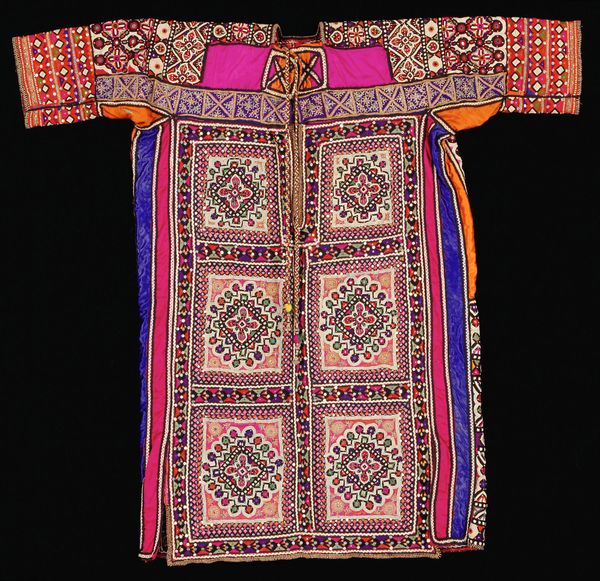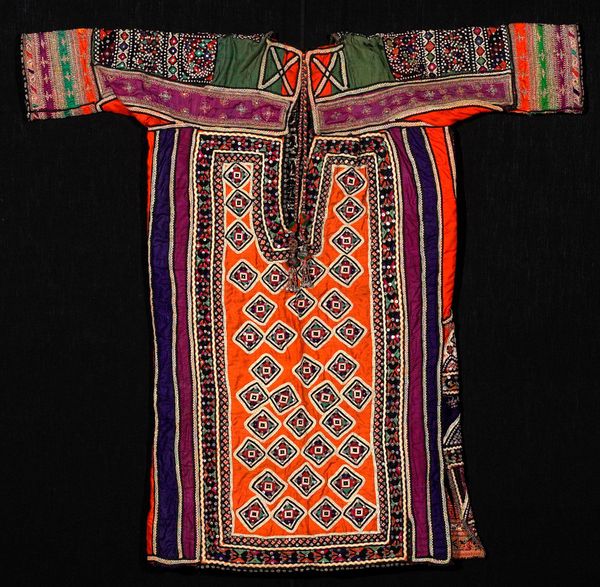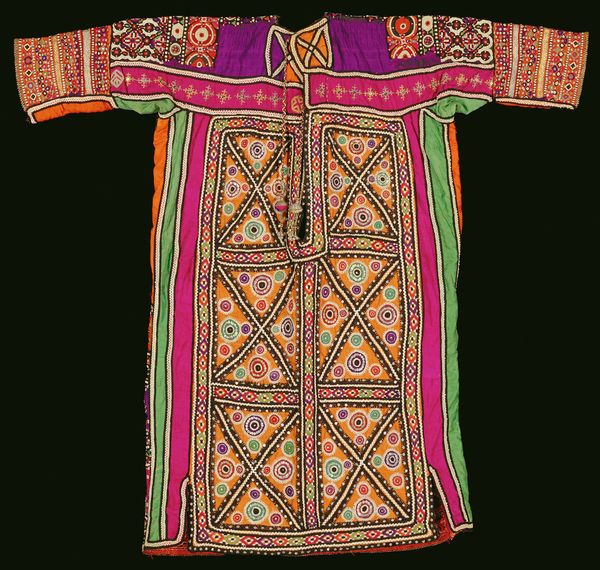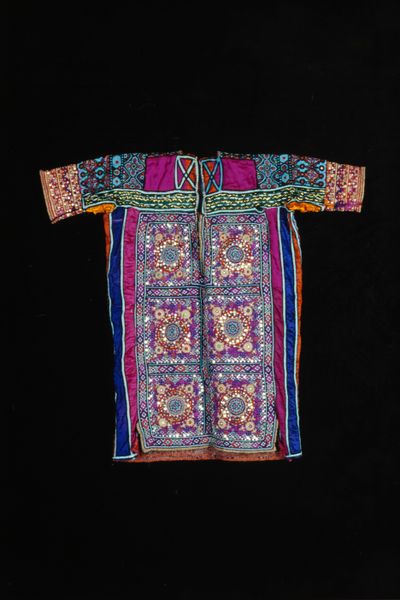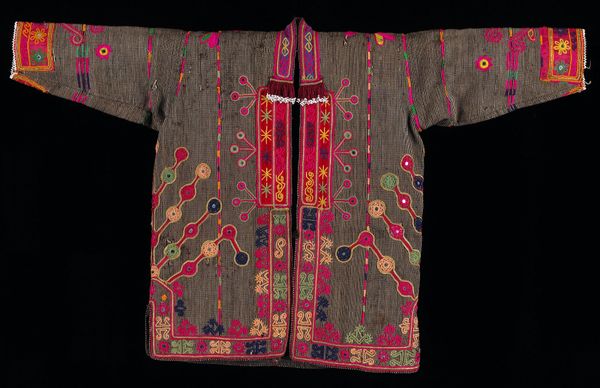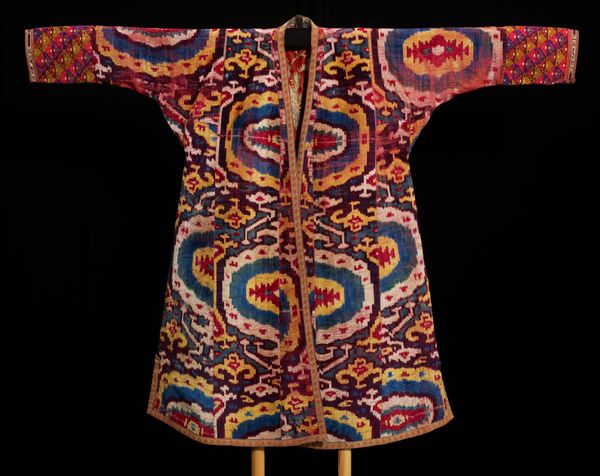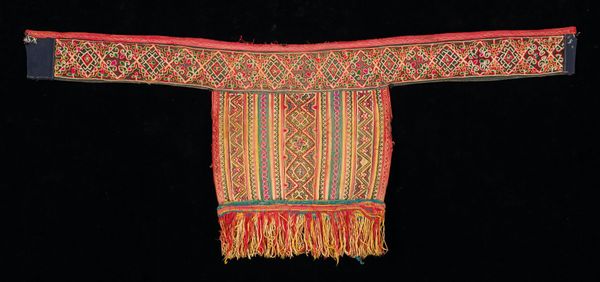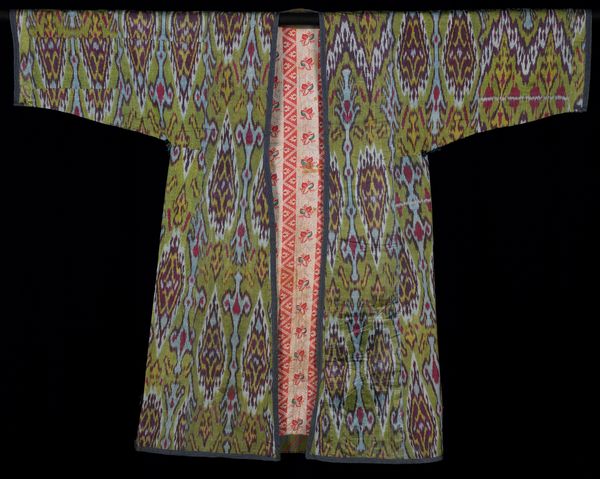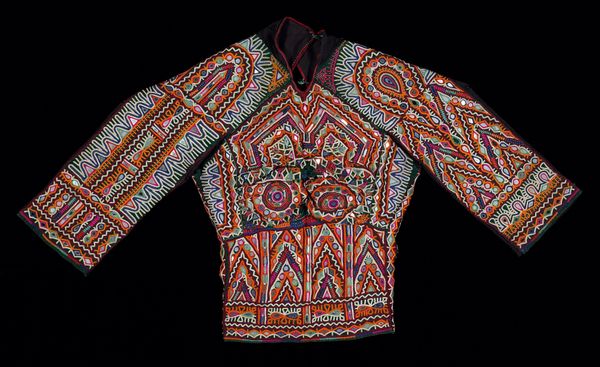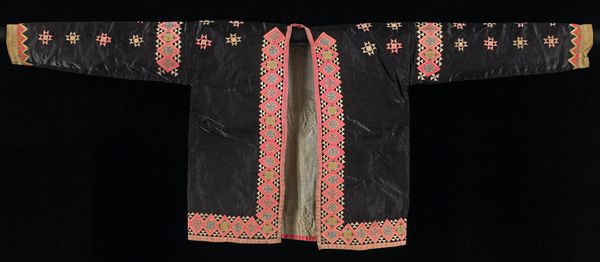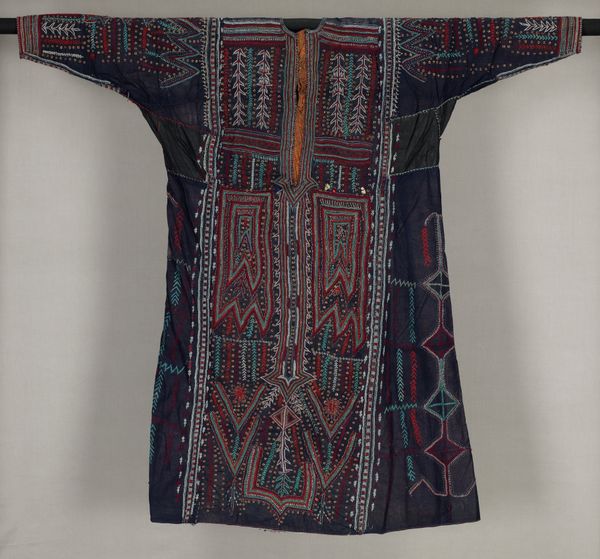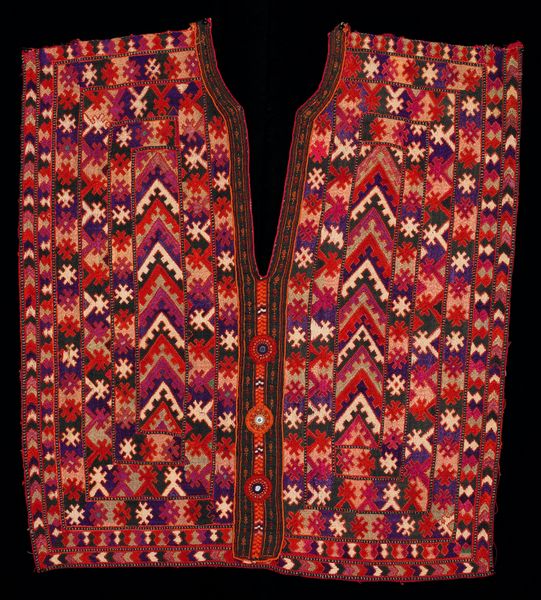
fibre-art, silk, weaving, textile
#
pattern heavy
#
fibre-art
#
silk
#
weaving
#
textile
#
fashion and textile design
#
geometric pattern
#
geometric
#
repetition of pattern
#
pattern repetition
#
textile design
#
beaded
#
layered pattern
#
funky pattern
#
combined pattern
Dimensions: 35 7/8 x 41 1/8 in. (91.11 x 104.45 cm)
Copyright: Public Domain
Curator: Let's delve into this remarkable "Wedding Tunic," created around the 20th century. The piece resides here at the Minneapolis Institute of Art, and what strikes me immediately is the incredibly vibrant explosion of pattern and colour across the entire surface. What are your first thoughts? Editor: It overwhelms me with visual energy. It’s joyous, almost dizzying. The repeated motifs seem to dance across the fabric, like figures in a celebratory procession. Curator: I agree. What resonates deeply for me is how this garment embodies a form of visual resistance. In many societies, textile production and ornamentation have historically been undervalued as "women's work." Here, though, that very space becomes a canvas for intricate symbolic language and cultural expression. The intensive labour poured into its creation, its careful crafting with fibre-art and silk, speaks to both artistry and cultural value, which is clearly apparent through the fashion and textile design. Editor: Absolutely, and beyond the labour, I see layers of symbolic meaning embedded in the geometric patterns. The repetition itself acts as a form of visual mantra, perhaps invoking blessings or good fortune for the wearer and their new union. It serves a potent cultural role, using images to communicate deeper psychological realities tied to marriage. Curator: That is insightful. Consider the significance of clothing within specific social rituals. A wedding tunic, in its very purpose, signifies a critical point of transition for the wearer and often encodes important messages about identity, status, and belonging within its society. Each geometric design is intentionally applied with layers that become visual languages that only certain members of society can read. Editor: And it makes me think about the communal aspect, too. Was this made by one person, or a group? The stitching itself likely holds stories of shared effort, perhaps even the transfer of skills between generations of women. Curator: Precisely. It connects deeply to the Pattern and Decoration movement within art history. Just like this Tunic, this movement explicitly challenges established hierarchies by embracing "decorative" elements. This piece invites us to question what is "high" versus "low" art. What are "craft" versus "fine art"? Why these distinctions matter, or perhaps shouldn't? Editor: In many ways, then, this tunic transcends mere clothing; it is a potent statement. Curator: Yes. It embodies layers of complex social history and female creativity. Editor: A vibrant artifact loaded with cultural memory and meaning. I'll certainly be reflecting more on the voices woven into its very fabric.
Comments
No comments
Be the first to comment and join the conversation on the ultimate creative platform.
